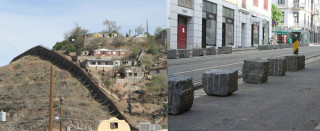Sustainability and urban conflict

The re-design and transformation of cities is critical in meeting the environmental challenge. But urban transformation is very often accompanied by social conflict. What can architects do about that?
At the seminar Re-designing the GAP – Urbanization between Formal Institutions and Informal Dynamics it was proposed that the practice of architecture should transform to be able to shape livable and sustainable future cities.
Integrity is still celebrated as an architectural virtue, according to theorist Tatjana Schneider from the University of Sheffield. She raised, along with other speakers, the question of how the architect can operate in different ways, exploring the boundaries of the profession beyond the traditional “black box” design practice.
The traditional limits of practice become clear in spaces of what San Diego architect and urban researcher Teddy Cruz calls “urban conflict”, such as the socially and politically charged US/Mexico border that he studies. These are spaces in which inequality is often evident as visual clashes between upscale neighborhoods, slums and infrastructure that has the capacity to both alleviate, but also exaggerate social injustice and access to the city.
That architects adopt a social and political stance has a history in the planning and design of cities, and according to Professor or Urban Planning at Colombia University Peter Marcuse, it mainly falls in two categories: the somewhat top-down Social Reform Planning, and Social Justice Planning which seeks to empower individuals and communities from the bottom-up.(1)
Around the world, cities transform due to globalization and demographic shifts, and city and national governments are also taking steps to meet the sustainability challenge by addressing problems such as energy consumption and wasteful material flows. In socially engaged architectural practices, as those presented at the seminar, urban ecology often features alongside with social projects, and the socially just city is increasingly seen as the ‘ecologically just’ city where access to the flows of energy and materials, and spaces for human non-human ecosystem exchange, leaving space for nature to perform in the city, are seen as key components.
Transforming cities and urban flows to meet the sustainability challenge can result in different social dynamics: the urban sustainability drive may generate consensus by providing incentives for collaboration across urban conflicts (borders), but it can also expose and even generate social conflict.
In Nordic welfare cities urban conflict is much less visible than in Latin American metropolises. But these cities are also transforming due to global trade and the increased movement of labour and people across borders. The question of how the the welfare city should adapt to a much more culturally diverse population, and respond the global exchanges of money, goods and resources are topics of ongoing debate. These energy hungry cities in Scandinavia and elsewhere, are also recognizing the sustainability challenge, and address it by transforming and re-designing cities in a variety of ways. The welfare society may be seen as a historic balancing between individual desires and the shared social aims expressed by the state. But when cities transform to become more ecological, they do so on an urban and regional scale, sometimes implementing changes that may be perceived hugely disruptive on a local or individual scale.
So even though urban conflicts are much less visual in the Scandinavian welfare city, potential social conflict in the city is still an important issue to consider as sustainable change is conceptualized and built by architects. So, what is the agency of transforming architectural practices in addressing social conflicts associated to urban sustainable change, how can planners and architects deal with NIMBY’ism (Not In My Backyard)?
While good intentioned architects may come up with clever solutions to the problems of urbanism today, deep structures of social inequality may hinder policies and actions towards urban change as it eliminates or erodes solidarity across segments of society.
Key to the possibility for architectural agency is to remember that substantial change of cities will not be socially accepted before the need is recognized. How can architecture contribute to this recognition?
Ending on a positive note Professor in Philosophy from the University of Oslo Christel Frecke reminded us: architecture visualizes the possibility of change – and we are all visual beings. And adding to this, Tatjana Schneider argued that architects can do a lot – they can for instance choose not to be complicit – by deciding whom they work for.
The seminar took place on April 25, 2015 at Litteraturhuset i Oslo. It was organized by the Centre for the Study of Mind In Nature (University of Oslo) and the Institute of Urbanism and Landscape (The Oslo School of Architecture and Design).
(1) Marcuse, Peter. 2011. The Three Historic Currents of City Planning: The New Blackwell Companion of the City, Blackwell Publishing.
Images: 1) ” Arizona/Mexico border” by Allen Ormond, used under CC BY. Slightly altered. 2) Theresesgate, Oslo. Conflicts arose when parking was abolished to improve conditions for the tram. AHO students of architecture and other designers have worked with interventions in the space.



